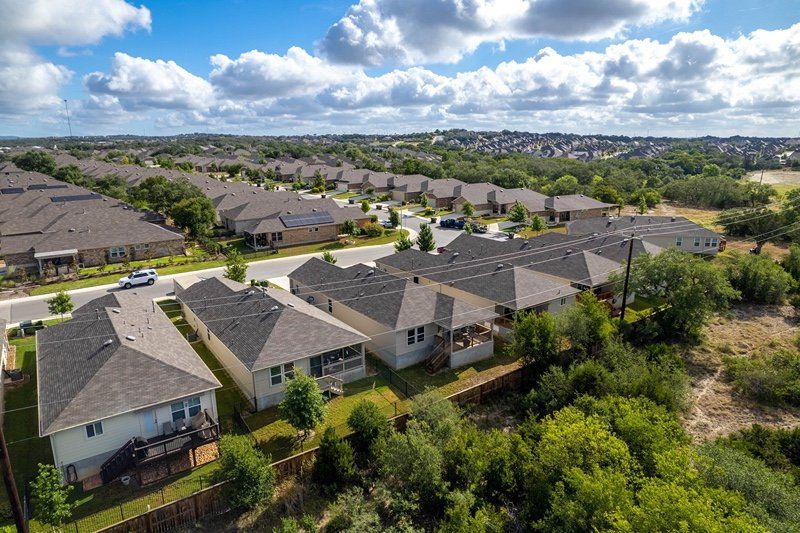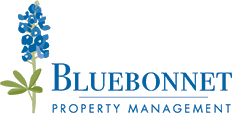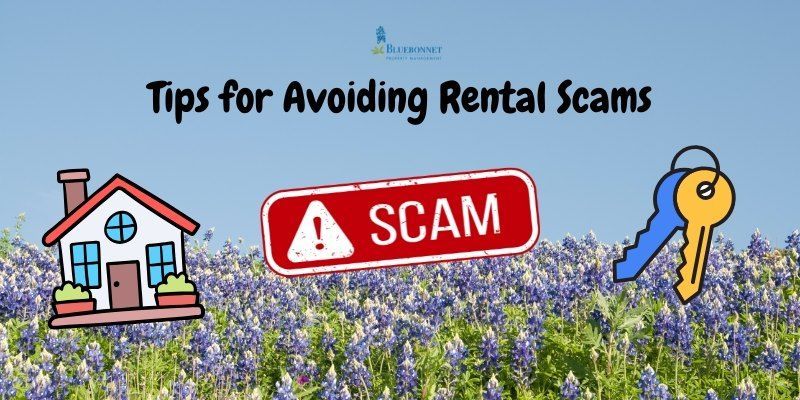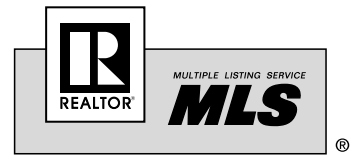How Much Profit Should You Make On A Rental Property in San Antonio?

Have you ever pondered how much profit you should make on a San Antonio rental property? If you have some extra cash to invest and are considering investing in a rental property, you should first examine how much you can anticipate to spend vs how much you can expect to make before you invest.
How much profit should you make from a San Antonio rental property? The truth is that there is no magic number or definitive answer. Every investor, every property, and every investment strategy is unique.
This article will provide an overview of the San Antonio rental market, as well as information on how to calculate rental profits, and reasons why it is worthwhile to invest in the San Antonio rental market.
How Much Does a Rental Property Typically Make in San Antonio?
Thanks to the booming nature of the San Antonio economy and multiple tech companies choosing the area as their headquarters, investing in the San Antonio market may offer you an excellent return on investment. Below is some data on how much you may expect to make on a rental property in San Antonio:
- Traditional Rental Income: $1,336
- Traditional Cash on Cash Return: 2.39%
- Best Investment Property Type: Single Family Home
- Median Property Price: $323,190
- Price per Square Foot: $183

How to Calculate Profit
There are several commonly used methods to calculate the profit on your real estate investment and help you keep your property profitable over time.
- Return on Investment (ROI)
Many experts and experienced investors believe that the most important criterion to consider when analyzing the profitability of a real estate investment is ROI. There is no universally accepted definition of a "good" ROI, however it is generally recommended to aim for a ROI of at least 15%. You must examine things such as your investment objective, property location, and size.
Here's an illustration. You pay $400,000 for a rental property plus an additional $20,000 in closing fees and maintenance/repair expenditures. When the house is ready to rent, you charge your tenants $2,500 per month.
If you split your income by your expenses, your annual ROI will be somewhat more than 7%. Whether 7% is a "good" or "bad" number is entirely dependent on your personal financial condition and the property in which you've chosen to invest.
- Cash-on-Cash Return
Cash-on-cash return (CoC) is a popular metric for measuring the profitability of real estate investments. It calculates the annual return on an investment based on cash invested and net operating income. CoC will vary greatly depending on your financing method, such as whether you paid cash or used a loan to purchase a property. Most experts recommend aiming for a CoC of 8% to 12%.
- Capitalization Rate
In real estate, the capitalization rate (also known as the cap rate) is the ratio of net income to the acquisition price of the property. For example, a $200,000 property rented for $1,500 per month would result in a net operating revenue of $12,000 per year. This amounts to a capitalization rate of 6%.
A successful cap rate is dependent on a number of factors. In a less desirable neighborhood with dangers or safety concerns, 6% may not be worth it. However, 6% may be a good return in a high-demand location with dependable tenants.

Preparing for Expenses
Investing in rental properties can be profitable in many ways, but investors must be aware of the overall expenditures. A rental property will incur additional fees in addition to the purchase price during the course of its existence. Continue reading to learn about some rental expenses and how to budget for them.
- Maintenance
There is no hard and fast rule about the expense of regular maintenance. Depending on the property, you may have to spend around 1-2% of the property value for maintenance purposes.
Although maintenance costs vary for every property, it is critical that investors set aside enough money each month to cover rental property expenses. This covers exterior maintenance such as curb appeal and interior common areas of the property. Furthermore, these costs may include one-time repairs to the building's heating system, roofing, or plumbing.
- Utilities
Most utilities are paid for by the renter, however services such as sewer and water are sometimes handled by the owner. This cost might range from $30 to $200 per month, depending on the property's location and utility usage. Utility costs can be deducted from taxes, much like other expenses related with a rental property investment.
- Property Management
Investors who want to simplify their rental property investment should think about incorporating a property management company. A skilled property management company can add significant value to your investment because even the finest landlords require assistance from time to time.
A property management company's roles and responsibilities include determining rental rates, collecting rent, allocating maintenance, marketing/advertising, managing relationships, and finding new renters. A property manager's perks include higher quality renters, faster vacancy cycles, better systems, fewer duties, and fewer legal issues.
Property management may cost between 8% and 10% of the monthly rent or a flat annual charge. Although these additional fees will have an influence on your bottom line, the value of a property management company is unparalleled for an investor, particularly those trying to expand their business.

Taxes
The city of San Antonio lies within Bexar County and therefore has its property taxes assessed by the county. Property tax rates are set each year and are dependent on a review of the county's needs for budgets and operations. Officials further rely on the Truth and Taxation Laws to help them determine the appropriate rates.
On average, Bexar County collects a property tax of 2.12% of a property's assessed fair market value. In general, property taxes in San Antonio are calculated by subtracting the value of any exemptions and, if applicable, the cap value from the homestead value of the property, and then adding any productivity or non-qualifying value. The taxable value is then multiplied by the tax rate per $100.
In addition, while the state of Texas does not have a local or state capital gains tax, rental property owners may have to pay federal capital gains tax when they eventually sell the property. One of the upsides to buying a rental property in San Antonio is the numerous tax benefits, deductions, and no state income or capital gain tax.
Furthermore, before investing in a rental property, it is advisable that you consult a local tax advisor for professional guidance on the tax obligations associated with owning a rental property in San Antonio.

An Example S.A. Rental Property
Looking to put these numbers into perspective? Check out the following examples:
Rental Property Purchased with Cash Transactions
If you buy a house with cash, calculating the ROI is quite simple. Here's an example of a cash-purchased rental property:
- The rental property cost you $100,000 in cash.
- Closing expenditures were $1,000, and remodeling charges reached $9,000, bringing your total investment in the property to $110,000.
- Every month, you collected $1,000 in rent.
After a year:
- During those 12 months, you received $12,000 in rental income.
- Expenses for the year totaled $2,400, which included the water bill, property taxes, property management, and insurance or $200 monthly.
- Your yearly profit was $9,600 ($12,000 - $2,400).
To determine the ROI of a property, use the following formula:
- Divide the annual return ($9,600) by the total investment ($110,000).
- ROI = $9,600 ÷ $110,000 = 0.087 or 8.7%.
- Your ROI was 8.7 percent.
Rental Property Purchase Using Mortgage
The calculation of the ROI on rental property associated with a mortgage loan is more complicated. Assume you purchased the same $100,000 rental property as described above, but instead of paying cash, you took out a mortgage.
- The mortgage required a downpayment of 20% of the buying price, or $20,000
- Closing costs were greater than usual for a mortgage, reaching $2,500 in advance.
- You spent $9,000 on renovations.
- Your out-of-pocket expenses totaled $31,500 ($20,000 + $2,500 + $9,000).
A mortgage also has continuing costs:
- Assume you took out a 30-year loan with a fixed 4% interest rate. The monthly principal and interest payment on the $80,000 loan would be $381.93.
- We'll add the same $200 each month to cover water, taxes, property management fee, and insurance, bringing your total monthly payment to $581.93.
- Rental revenue of $1,000 per month is $12,000 for the year.
- The monthly cash flow is $418.07 ($1,000 rent - $581.93 mortgage payment).
One year on:
- At $1,000 per month, you generated a total rental revenue of $12,000 for the year.
- Your yearly profit was $5,016.84 ($418.07 divided by 12 months).
To determine the ROI of the property:
- To calculate ROI, divide the annual return by your initial out-of-pocket expenses (the $20,000 down payment, $2,500 in closing charges, and $9,000 in remodeling).
- ROI = $5,016.84 ÷ $31,500 = 0.159.
- 15.9% is your ROI.
In addition, to increase the ROI of your rental property in San Antonio, it is important that you work with an experienced local property manager. While property managers in San Antonio charge a certain percentage of the rental monthly income, the benefits they bring to the table are numerous.

Is Investing in San Antonio a Smart Idea?
Is San Antonio a good area to invest in real estate? The answer is yes. San Antonio is a wonderful place to own rental property for a variety of reasons. Here are some of the major reasons why San Antonio and the surrounding area may provide you with a high return on your rental investment.
High Renter Population
If you were to invest in San Antonio real estate today, your long-term rental property would be in high demand. This is largely due to the presence of a high number of renters within the San Antonio area. Currently, renters occupy 46% of the properties, which is a good figure to have in mind if you intend to invest in a rental property.
Recent data from real estate expert Mashivor also provides insight into the San Antonio real estate market's rental demand. The price-to-rent ratio is set at 16. A price to rent ratio of 16 - 20 often indicates that the majority of residents in a housing market find it more inexpensive to rent than to buy (in many circumstances).
Population Growth
Another key factor for any real estate investor is the city's population and its growth. You want to ensure that there is a demand for your rental or that there are enough clients eager to buy your property if you decide to sell.
San Antonio is currently the seventh most populated city in the United States and the second most populous in Texas, and it does not appear to be slowing down anytime soon. The San Antonio metropolitan region has a population of 2,320,000 as of the 2020 census.
According to the US Census Bureau, San Antonio's population increased by 16.7% between 2010 and 2019. For comparison, Houston's population expanded by 10.7% and Dallas' population increased by 12.2%.
More Affordable Than Most Major Cities
Before delving into the full study of other major aspects that determine the attractiveness of investment, we should review the overview of real estate prices in the area. According to SABOR data, the median property price in the San Antonio real estate market is $323,190 compared to the median price of homes in the US at $397,589.
Also, when compared to metro cities like New York, Los Angeles, and even Austin, San Antonio real estate is more affordable on average. Given that it is one of the largest cities in the country, being able to purchase an investment property in such a location at an inexpensive price is a fantastic real estate investment opportunity.
Military Presence
Because of the high concentration of military posts in the vicinity, San Antonio is nicknamed as "Military City, USA." One in every eight Bexar County residences is affiliated with Joint Base San Antonio (JBSA).
JBSA will continue to attract military people looking for long-term and short-term rentals for many years to come, supporting 80,000 active-duty military members and three installments of up to 138,000 students annually.
A Strong Economy
It is common knowledge that rapid population growth is frequently accompanied by a robust economy, which in turn supports a robust San Antonio real estate market.
San Antonio's economy is extremely broad in general, with healthcare and bioscience, aerospace, information technology and cybersecurity, and new energy economy among the main industries. Tourism is also a significant industry in San Antonio, with over 31 million visitors arriving each year. Tourist spending has a significant economic impact.
San Antonio has enjoyed some of the nation's best economic development in recent years. Moreover, despite the fact that the COVID-19 had a negative impact on the economy in 2020, recent data show that the local unemployment rate has decreased and net jobs have increased.
A History of Real Estate Appreciation
San Antonio-New Braunfels, TX home values have increased by roughly 104% throughout the last decade. According to Neighborhoodscout data, San Antonio real estate has appreciated 95.17% in the last ten years, for an annual home appreciation rate of 6.92%.
This places San Antonio in the top 20% of all cities in terms of real estate appreciation. San Antonio's appreciation rate during the last year was 19.74%. It was 8.51% in the most recent quarter, which equates to a rate of 38.65% on an annualized basis.
It also supports Zillow's San Antonio metro area house value forecast. Based on these figures, it is a foregone conclusion that San Antonio property prices will continue to grow over the following twelve months. Clearly, underestimating investing in San Antonio is a bad long-term financial strategy.

How to Increase Your ROI
There are various techniques you can adopt to generate more money from your rental and raise your ROI real estate, regardless of the sort of property you're investing in, whether it's a single-family home, multi-family unit, condo, or townhouse.
Let's have a look at some of these key points:
1. Always Evaluate Rental Rates
Because the market is continuously changing, it is critical to keep an eye on it and always evaluate current rental rates. Keep your rental rates within the market norm to avoid undercharging yourself. If you go too far outside the margin, you will almost certainly have a high turnover rate, which will result in vacancy and possibly a negative ROI.
2. New Flooring, Fresh Paint, and New Hardware
Even if it is a rental, tenants want their property to appear nice. Having worn flooring or damaged carpet will not pique anyone's curiosity. You can boost the marketability of your home by installing new flooring that looks excellent and lasts a long time.
A new coat of paint, like new flooring, can make a big difference. It has the ability to make even the oldest structures appear brand new. Small modifications, such as replacing knobs and pulls on cabinets in the kitchen and bathroom, may transform the area.
These are relatively inexpensive solutions to spruce up the rental, put more money in your pocket, and thereby increase your rental property ROI.
3. Ramp Up Your Tenant Screening
Nothing reduces ROI more than difficult tenants. Damage to your property and the cost of an eviction will cost you money, so you want to be as certain as possible upfront that your tenants aren't the type of people who will ignore paying rent or mistreat your property.
That is why background checks, rental history checks, and employment checks are so crucial. Is the prospective tenant able to pay the rent? Is their income around three times the monthly cost of rent? Do they have a history of evictions? Why?
To find the appropriate fit, you must answer these questions. A good tenant will take good care of your property and pay rent on time—that's a relationship worth the time and effort.
4. Conduct Regular Inspections
Nothing saves money like avoiding costly maintenance issues, and the easiest way to do so is to schedule frequent inspections. Keep a list of maintenance jobs that require inspection and engage inspectors ahead of time. Your property manager can give your tenants a schedule of when to expect inspectors, both to give them warning and to let them know to keep an eye on particular areas of the property.
Schedule frequent maintenance activities that you do not want the tenant to be responsible for on their own, in addition to inspections. Replace furnace filters, clean gutters, and maintain HVAC systems consistently. And when an inspector comes to you with a suggestion, follow through on it.
5. Hire a Property Manager
Hiring a property manager is one of the best moves you can make to boost your rate of return. They do more than just manage your property; they seek to grow your investment and boost your rental property ROI. As a regular part of their business, they handle maintenance, gardening, charge pet fees, undertake extensive tenant screening to attract the best tenants, offer creative and automated solutions, and so much more.
When it comes to property management, Bluebonnet Property Management is San Antonio's best of the best. We understand that you are an investor and that your rental property is a source of revenue for you. That is why we will do everything in our power to ensure that you optimize your profits. Do not risk losing money while attempting to learn how to make money. Instead, employ a property manager and leave it to the specialists.
Conclusion
Investing in real estate through purchasing rental property in San Antonio provides the opportunity for both short-term returns from rental income and long-term returns from property value appreciation, as well as tax benefits that can be used to lower taxable income.
Before investing in any sort of real estate, it is important that you carefully consider the potential risks and rewards. More importantly, hire a tested and trusted property management company like Bluebonnet Property Management to oversee the day-to-day operations of your property. To learn more about how we can make your life easier, click here to learn about what services we offer.







